No tears for the loss of mangroves: start planting 150 million trees
- Mangroves, tree forests that on the shore of the sea cover the tides full to the waistline and show their roots in the air on the low tide, are being destroyed in every corner of the planet. Everybody? No: in all the tropics there are associations and people who are planting millions of ‘amphibious’ trees, with the objective of facing a sea that rises millimeters.
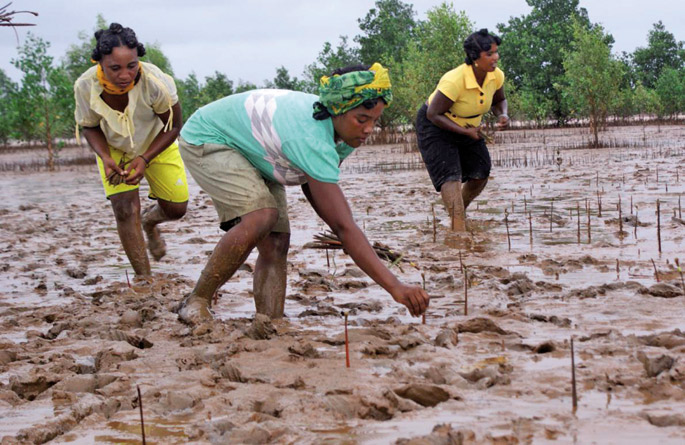
One hundred million new trees on the same shore of Senegal: ARTE offers on Franco-German television pictures of one of the world's most surprising attempts at reafforestation in the Vu du Ciel (Seen from the sky) program. Filmmaker Yann Arthus Bertrand wanted to share experiences that arouse the principles of optimism among the thousands of catastrophes that television has shown during the weeks of COP21.
According to the documentary, one of Senegal ' s great ecological challenges is the survival of fish and ecosystems in coastal mangroves. And when the mangroves of Senegal are mentioned, Haidar El Ali, one of the 100 most entrepreneurial ecologists in the world, is called a hero. It has convinced thousands of Senegalese to plant millions of small mangroves.
Mangroves are the forests of trees and shrubs that on the tropical and subtropical shores are found in areas where the tide is hidden and emptied twice a day. They have adapted to living in salt water, to the difficult conditions of the beaches. They are equipped with a special system of roots, able to survive in the mareagor between salt water and wave in low-oxygen sludge and sustain the trunk standing in the air during the mareada.
If in 1980 these special forests were filled on the planet 188,000 km2, between 2005 they were reduced to 152,000 km2. In 25 years there has been a 20 per cent loss, most of which is to build structures for industry, housing and tourism, to fill them more and more with the gigantic nurseries of lobsters or corners, or to burn reservoirs, roads, canals, etc., which have exhausted the sweet waters of the environment.
However, in the midst of the destruction of mangroves there are those who, in addition to fighting to protect them, try to plant new young trees in the foothills of marshes, rías and marshes that are in danger, such as in Vietnam or Bangladesh in Madagascar or Senegal.
One of the most famous experiences has been selected for ARTE, that of Senegal. Haidar El Ali (1953) is the soul of the NGO Oceanium. Since its foundation in 1984, Oceanium has brought together environmental works in three axes: the revitalization of coastal forests through the planting of young mangroves (Rhizophora mangle), ecotourism and associated diving, as well as the cleaning of terrestrial pollutants as in water.
In 2006, plantations began in the village of Tobor, in the Casamance Delta, by introducing 65,000 trees into a destroyed marsh. After demonstrating that 85% of young feet were moving forward – before there were failures – in 2008 with the 5 million paléhad campaign, which is called in French Mangroves, they managed to plant more than six million feet mobilizing more than 32,500 people from 110 countries in a month and a half.
The figures for 2010 were surprising: 62 million trees in 5,000 hectares, among 110,000 people from 408 localities... The reader interested in the success of the reforestation of the deltas of Casamance and Sine Saloum will find on the Internet several reports, as in writing in the videos.
What price does lobster have?
Like Oceania Senegal, there are many other NGOs and associations working similarly around the world, such as Mangrove Action Project. The MAP calls for collaboration with environmentalists specialized in mangroves, local NGOs and administrations in the application of grants from foundations in the first world.
Each institution has its own uniqueness. The MAP underlines that it has its own methodology for restoring coastal forests, giving importance to the diversity of trees being planted – indirectly criticising that others promote single-species forests. Successful reforestation techniques and citizen participation is important to ensure that most small trees survive a few years later, and even more so with climate change, when they are one of the most vulnerable victims of tides and major storms.
MAP employs 130 full-time people and has projects in Cambodia, El Salvador, India, Indonesia, Malaysia, Myanmar, Sri Lanka and Thailand. It also conducts education and advocacy work in the defense of mangroves, still healthy, in China and Bangladesh.
The MAP also sends a message to consumers in rich countries: Question Your Shrimp, I mean, ask about our own pages. Yes, the pintxos, entremes and snacks we eat every day in the simplest salads and the lobsters that cannot be missed in the Christmas stomachs. They know a lot about mangrove destruction.
Intertidal forests have been destroyed to build incubators for corners, most of them in poor countries: “More than a million hectares of mangroves have been destroyed around the world in the last three decades to organize in it the incubators of shrimp,” says the MAP in its campaign. Among the industries that reach the tropical shores, one of the most devastating is that of the corners: cover large spaces at a low price, crush everything, profit quickly and go!, leaving behind nothing but destruction. This type of aquaculture produces 8,000 million dollars a year on farms and between 50 and 60,000 million dollars in shops. A fortune for speculators, because in addition to corrupt local governments, the World Bank and other strong institutions are especially supportive of them.
In addition to the damage caused by the giants who have everything free and allowed, they are also caused by the neighbours themselves. The population is growing in poor countries, they need wood for fire, wood for construction, hunger also for satiation. As it has been centuries since the people of the hottest and coldest places destroyed ours, now the need to live leads the poor to put down their forests.
Blue Venture, another conservation and replanting NGO, works in Madagascar. Sylvia Paulot and Kate England have narrated the atmosphere at the Antanandahy Pier in the Tsiribihina Delta: “Life is hard for 400 people. To survive, they have no more than the sea, the mangrove and the river, no tap water, no market, no doctor. They are often attacked by criminals, stealing what little they have acquired or gathered in their homes.” They do not live very different from mangroves, drowned in mud, fearing any blow of wind or sea. For fear, but deeply rooted.”
Klima aldaketaren eraginez, munduko lurralde gero eta gehiago idortzen ari dira, milioika pertsonaren jarduera eta bizimoduak kolokan ezarririk. Fenomeno horren frontean dago India erdialdeko Maharashtra estatua, non klimaren berotzeari eta lehortzeari metatu zaizkien oihan... [+]
Today’s Venice is built on an archipelago of 118 islands. These islands are connected by 455 bridges. The city is based on mud rather than Lura. Millions of trees in the area were cut down from the 9th century onwards to build piles and cement the city. Years have passed and... [+]
Lurrak guri zuhaitzak eman, eta guk lurrari egurra. Egungo bizimoldea bideraezina dela ikusita, Suitzako Alderdi Berdearen gazte adarrak galdeketara deitu ditu herritarrak, “garapen” ekonomikoa planetaren mugen gainetik jarri ala ez erabakitzeko. Izan ere, mundu... [+]
Eskola inguruko natur guneak aztertu dituzte Hernaniko Lehen Hezkuntzako bost ikastetxeetako ikasleek. Helburua, bikoitza: klima larrialdiari aurre egiteko eremu horiek identifikatu eta kontserbatzea batetik, eta hezkuntzarako erabiltzea, bestetik. Eskola bakoitzak natur eremu... [+]
Agintari gutxik aitortzen dute publikoki, disimulurik eta konplexurik gabe, multinazional kutsatzaileen alde daudela. Nahiago izaten dute enpresa horien aurpegi berdea babestu, “planetaren alde” lan egiten ari direla harro azpimarratu, eta kutsadura eta marroiz... [+]
Biologian doktorea, CESIC Zientzia Ikerketen Kontseilu Nagusiko ikerlaria eta Madrilgo Rey Juan Carlos unibertsitateko irakaslea, Fernando Valladares (Mar del Plata, 1965) klima aldaketa eta ingurumen gaietan Espainiako Estatuko ahots kritiko ezagunenetako bat da. Urteak... [+]
Nola azaldu 10-12 urteko ikasleei bioaniztasunaren galerak eta klima aldaketaren ondorioek duten larritasuna, “ez dago ezer egiterik” ideia alboratu eta planetaren alde elkarrekin zer egin dezakegun gogoetatzeko? Fernando Valladares biologoak hainbat gako eman dizkie... [+]
Eskoziako Lur Garaietara otsoak itzularazteak basoak bere onera ekartzen lagunduko lukeela adierazi dute Leeds unibertsitateko ikertzaileek.. Horrek, era berean, klima-larrialdiari aurre egiteko balioko lukeela baieztatu dute, basoek atmosferako karbono-dioxidoa xurgatuko... [+]











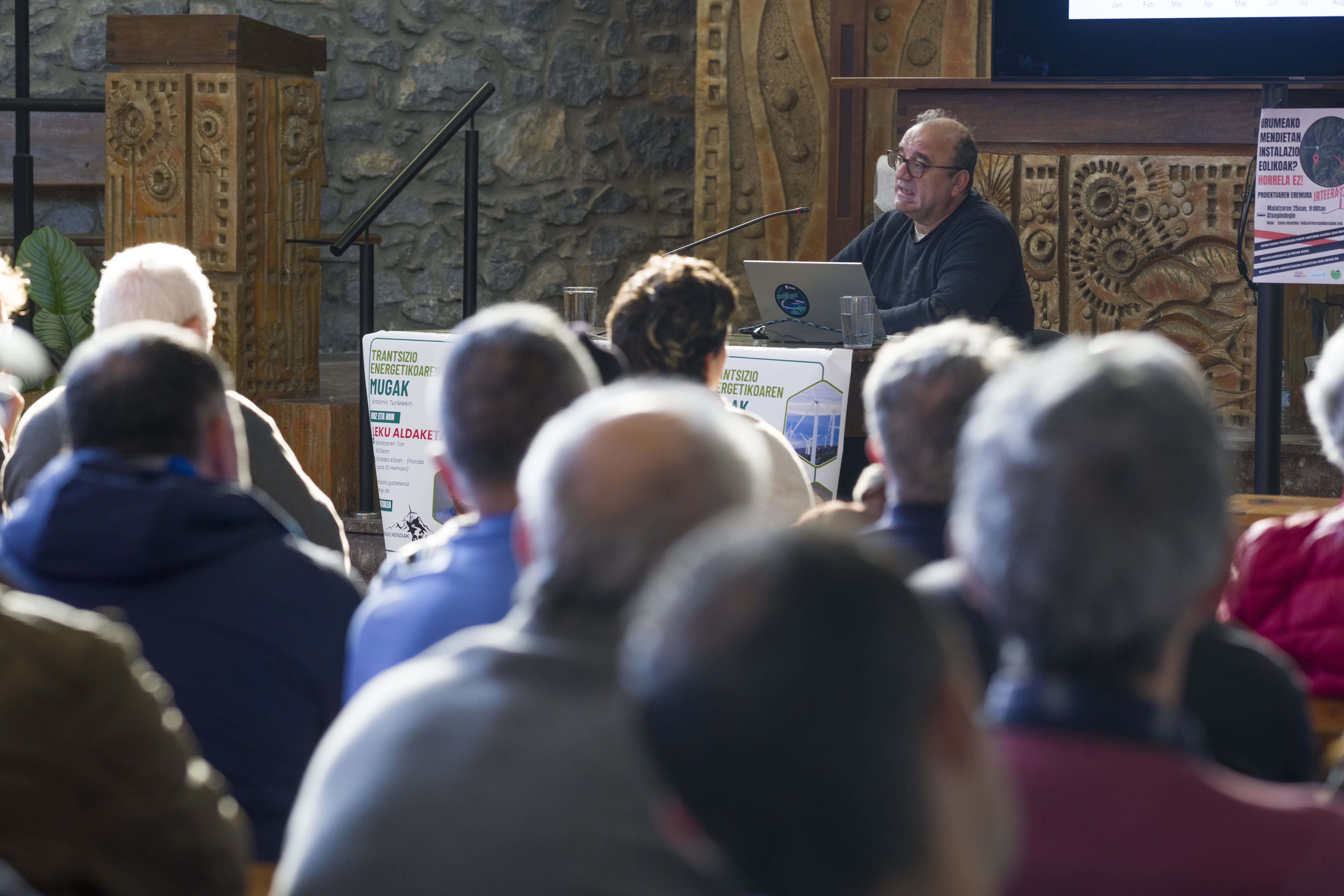

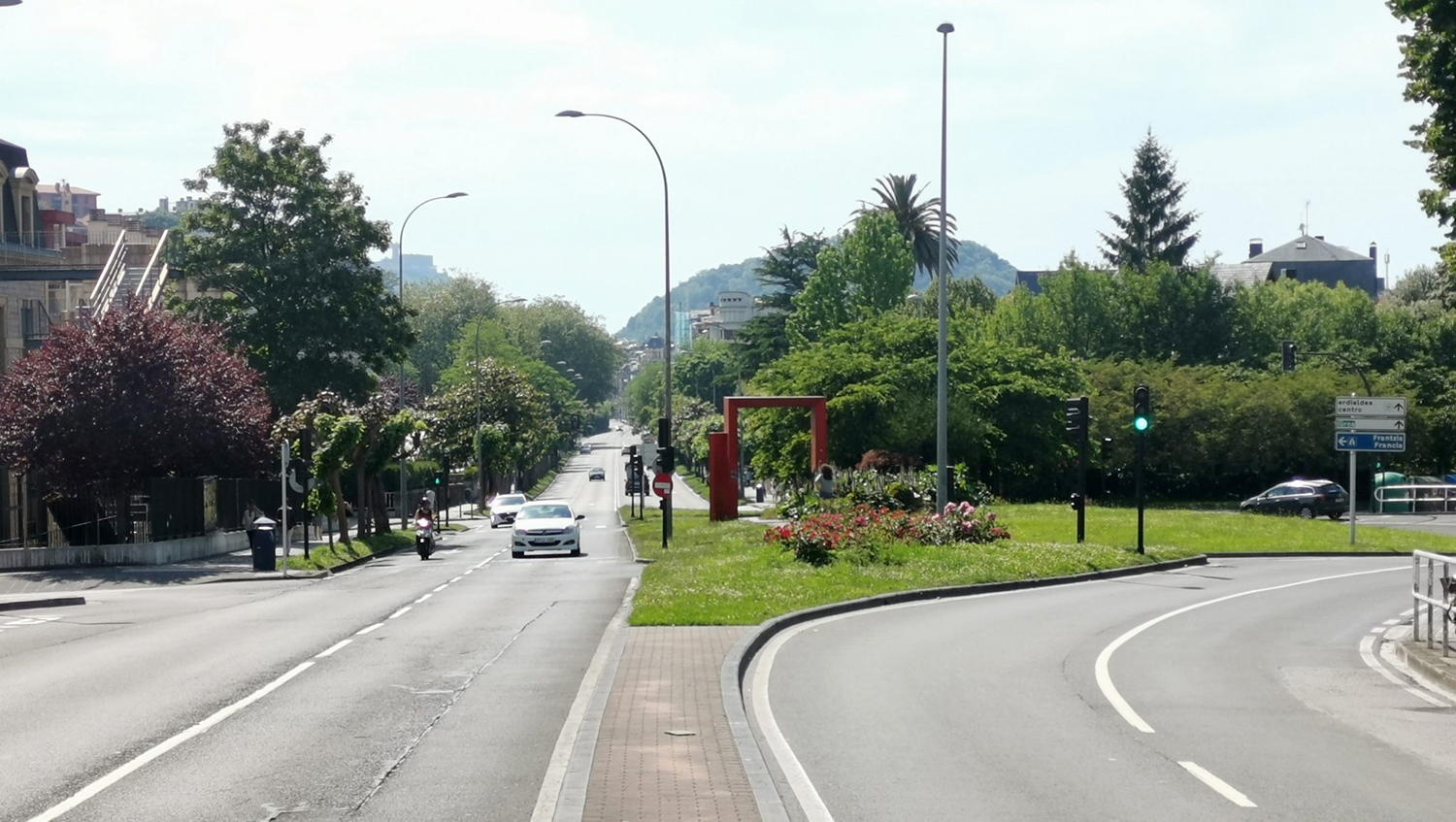





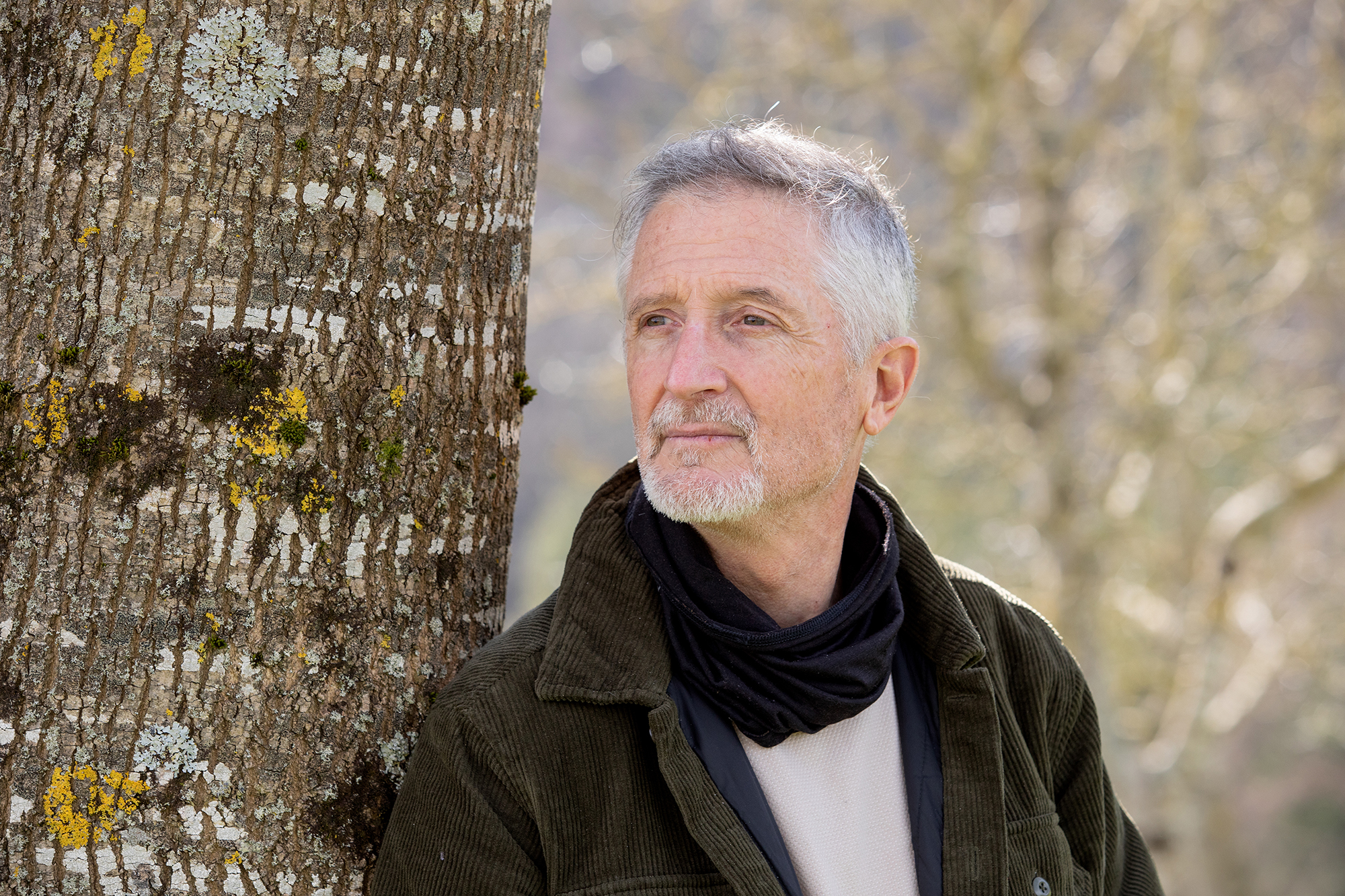
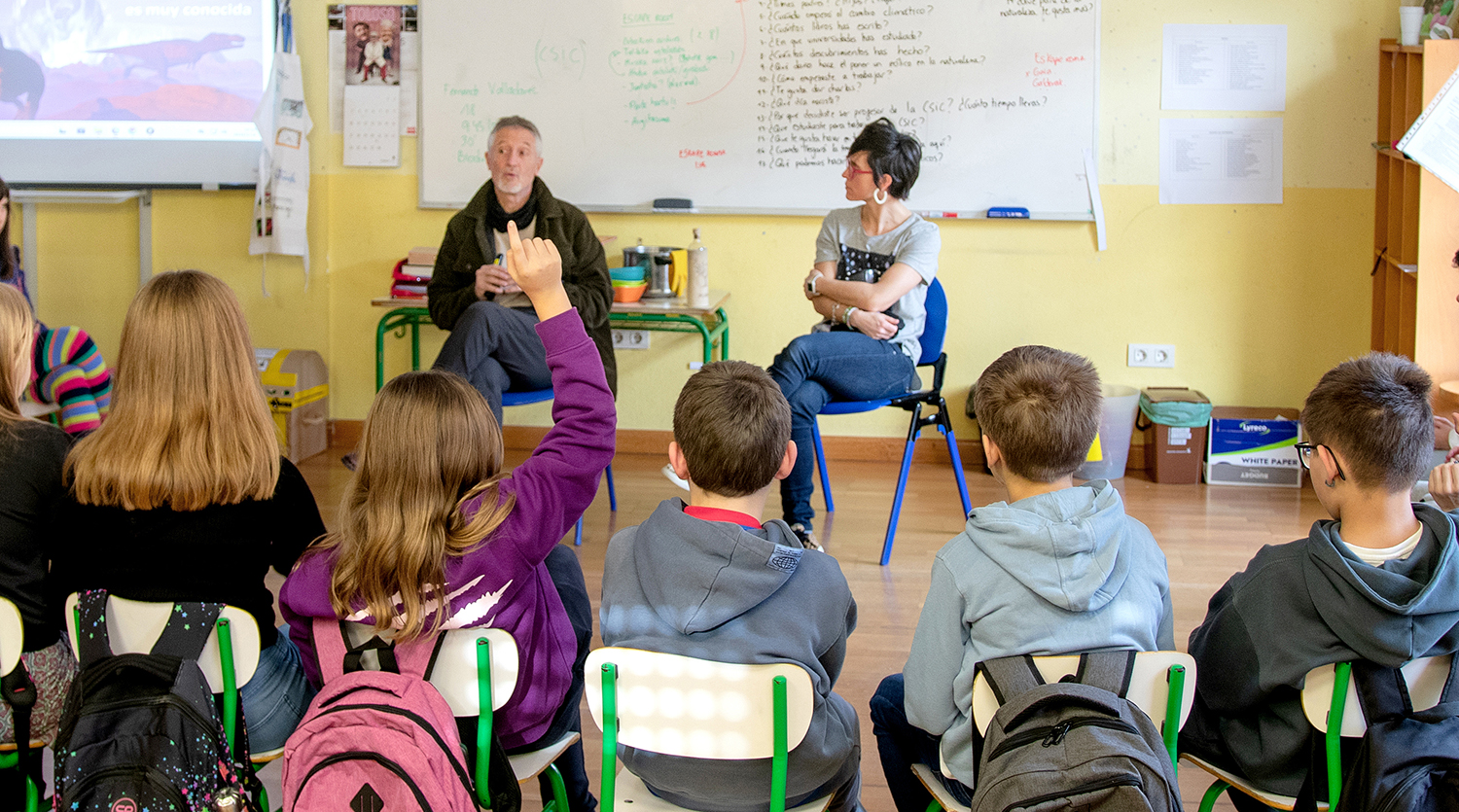

_Glaciar.png)